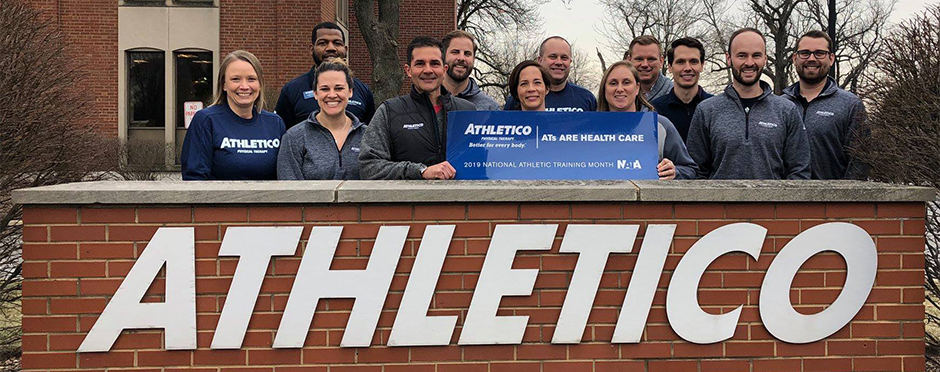
Ask an AT Anything: Instagram Stories Q&A Event Roundup
Leave a CommentEvery March Athletico celebrates National Athletic Training Month to recognize the important work of athletic trainers throughout our communities. This year’s national theme was ATs Are Health Care.
To highlight the importance of these allied healthcare professionals and to give insight into the profession, our team engaged in a Q&A session on Athletico’s Instagram Stories. The event allowed our team to engage with followers by answering their questions and showcasing what it’s like to work as an athletic trainer at Athletico!
Since our athletic training team wasn’t able to answer every question that was sent in during the event, they have provided answers for the questions that didn’t make it into our Instagram Story. Read below to learn how athletic trainers evaluate concussions, stretching recommendations and injury prevention tips.
-
What are your favorite warm up stretches?
We like dynamic stretching to start off activity!
-
What are some things you’re looking at if you think someone has a concussion during game?
We look for many things when evaluating a potential injury, including symptoms the patient describes as well as things like concentration, memory and balance objectives.
-
What are some prevention strategies that I can use for ACLs?
There are many different things you can do to prepare the body for sport and hopefully prevent injury (though not guaranteed). Right to left side equilibrium as well as core strength are definitely key aspects to that training.
-
Best thing to do when you are an athlete in season with periostitis?
As with most injuries, RICE (rest, ice, compression, and elevation) is a good way to start healing. You can also use over the counter anti-inflammatory medicine for a few days. If pain doesn’t subside after three days, it may be a good idea to seek at your athletic trainer or other health professional.
-
Isn’t a heat pack contradiction to acute injuries?
Ice for acute injuries. As you work further into the healing, most will heat prior to activity and ice afterward.
-
How will ATs be utilized in the emerging TeleMedicine field?
Telemedicine is a unique way for health professionals to reach potential patients in an expedited manor. Having athletic trainers staff our telehealth service line, virtual free assessment, allows for someone with orthopedic experience to assist our patient in knowing what options are available for them to get better.
-
How can ATs address the opioid crisis?
Education for athletic trainers as well as education to athletes, parents, and coaches on the best practices of any medication use as well as how to identify signs of overuse and what actions to take.
-
Do NHL ATs wear special shoes to not slip on the ice?
They can! Some wear their regular shoe and put a rubber booty over their shoe that provides them more traction.
-
What steps do you recommend a H.S. student take toward a career in AT?
Shadow or observe your high school athletic trainer if that is available to you. Also be sure to ask them lots of questions.
-
What stretches do you recommend for a slap tear?
This all depends on the tear and if this was surgical or not. Basic “wand” (or broom or golf club) stretching to work the shoulder gently in each plan of motion is a good starting place.
-
If you could what would you change in health care?
More collaboration! Each lane of healthcare brings great qualities to the table to get athletes and patients back quickly. Communication between practices could open up all doors for a patient.
Watch the video below to see our full Instagram Story from the event.
Thank you to everyone who participated in our event and helped make it a success! We are happy to showcase the wonderful work that our athletic trainers do every day within the communities where they live and work.
